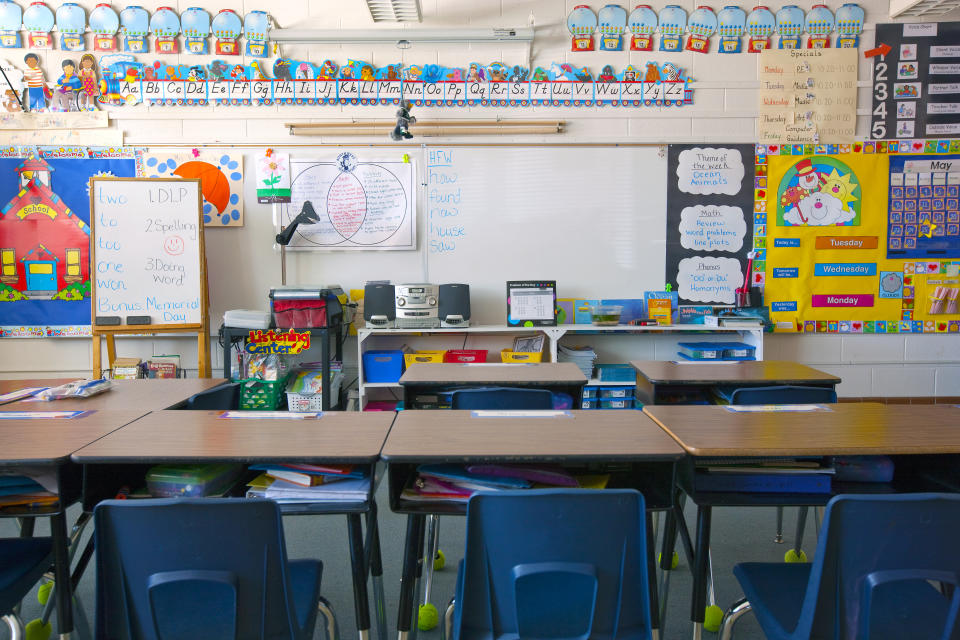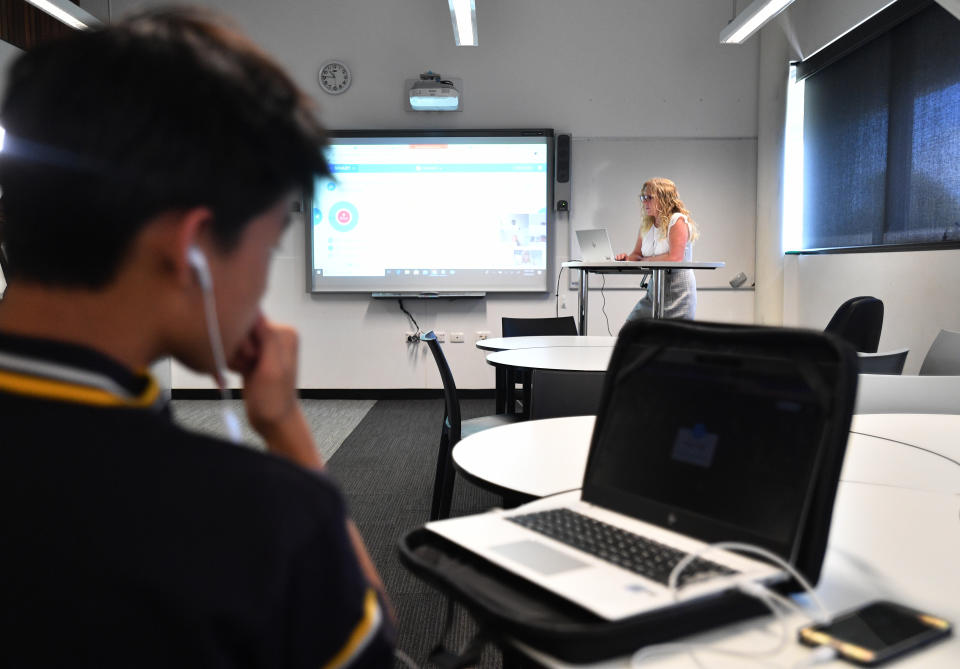Scott Morrison announces seven principles for schools amid virus lockdown
Scott Morrison has assured parents that schools across the country will return to some level of normality over the coming weeks amid the coronavirus pandemic, after seven ‘National Principles’ were discussed in the Cabinet Meeting on Thursday.
Mr Morrison said the seven points were agreed upon today and aligned with health advice, while acknowledging the federal government does not dictate rules and policy for Australian schools.
“This is a state and territory issue, I want to make that clear,” he said.

Mr Morrison said the principles are based on the recognition that education is “best delivered” face-to-face, in the classroom and stated the medical advice remains that children are safe to go to school.
The first of the seven points speaks to the quality of education in Australia and reiterates how the government recognises “education is best delivered by professional teachers to students in the classroom on a school campus”.
Mr Morrison said he wants to see his own children get back in the classrooms.
“I want my kids to go back to school and be taught in a classroom by a teacher,” he said.
“That's what I want to see happen, when a school in New South Wales that they go to can deliver that for them ... I will happily have them back there in a heartbeat.”
Mr Morrison was previously questioned about having his two daughters at home at the end of last term while simultaneously urging parents to send their kids to school.
However, the second among the National Principles also acknowledges amid the coronavirus pandemic that “alternative flexible, remote delivery of education services may be needed”.
“Our schools must be healthy and safe environments for students, teachers and other staff,” the third outlined principle states, to “ensure the effective and efficient delivery of education for students”.
The fourth principle echoes what Mr Morrison made clear at the press conference – that state and territory governments, and non-government sector authorities are responsible for calling the shots.
This means the decisions for each state could differ, however all decisions made in response to the coronavirus regarding schools “must continue to to be informed by expert, official, national and state-based public health and education advice, consistent with these state principles”.
“Parents should follow the instructions that are being provided by state premiers and state education ministers,” Mr Morrison said.
“If you are going to school in Victoria there is only one person you need to listen to and that is the Premier of Victoria.
“Likewise in New South Wales you should listen to the Premier of New South Wales.”
The principles also outline how all students must continue to be “supported by their school to ensure participation in quality education”, amid the pandemic.

The final principle assures advice from the Australian Health Protection Principal Committee (AHPPC) states “attendance at a school campus for education represents a very low health risk to students”.
“The advice also notes that appropriate practices must be employed at schools, like at other workplaces to provide a safe working environment for school staff including teachers, and that the specific AHPPC advice regarding school campuses should be followed”.
Coronavirus: Scott Morrison reveals three steps to 'road out of lockdown'
How five other countries eased lockdown rules - so is this what's next for Australia?
Morrison addresses threat to teachers
During the press conference Thursday, Mr Morrison did address the threat of teachers contracting COVID-19 in the workplace, while reiterating schools are a “safe place for children”.
“Teachers are more at risk in the staffroom than they are in the classroom when it comes to how the health advice plays out and the impact of this virus on children as opposed to teachers,” Mr Morrison said.
“That means that we need to have proper arrangements in place for teachers and other staff in schools obviously to protect their work environment, but at the same time that doesn't lead to the same rules applying for students because they have a different level of risk.”

Chief Medical Officer Brendan Murphy said it has been recommended elderly teachers and teachers with chronic disease do not work in the classroom, while outlining other recommendations which could see how schools may change during the pandemic.
“Right across the school environment reducing the size of groups,” Mr Murphy said.
“Teachers can practice social distancing with each other, we know children don't seem to be transmitting this virus to any great extent at schools.”
He also suggested teacher practise physical distancing with other adults and children in the classroom and have students practice good hygiene as best they can.
Do you have a story tip? Email: newsroomau@yahoonews.com.
You can also follow us on Facebook, Instagram and Twitter and download the Yahoo News app from the App Store or Google Play.





